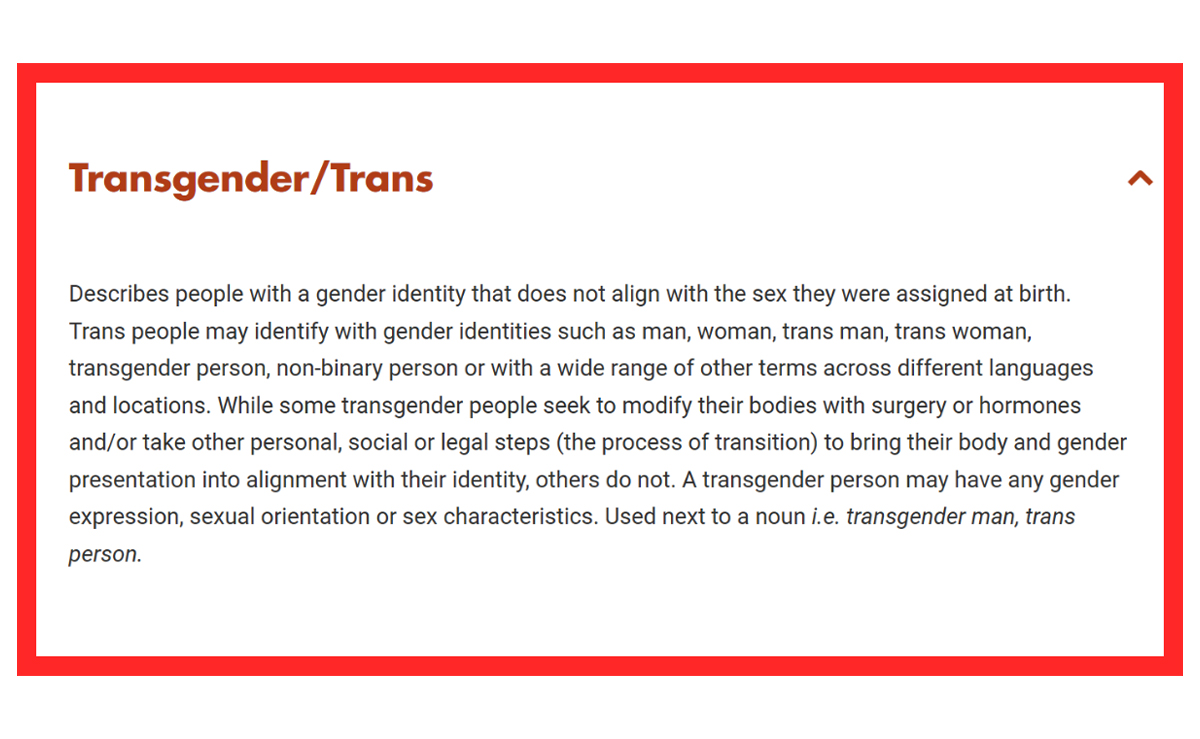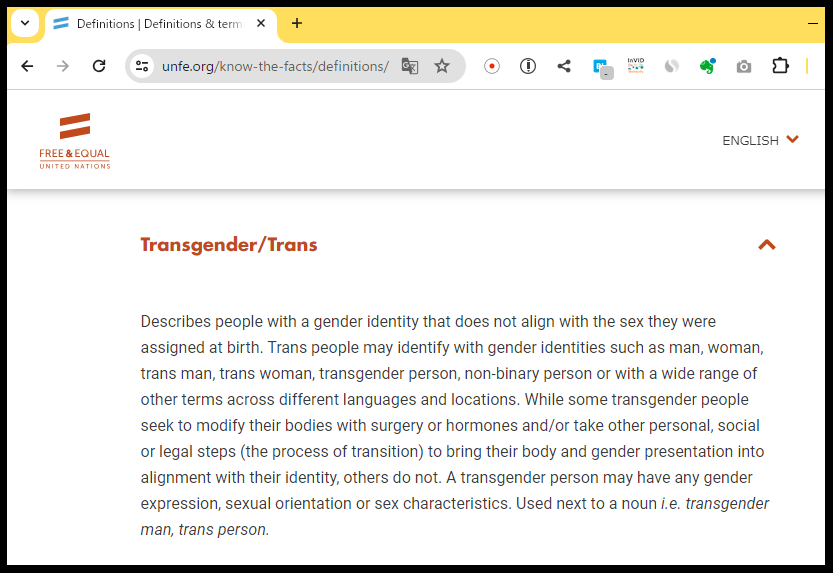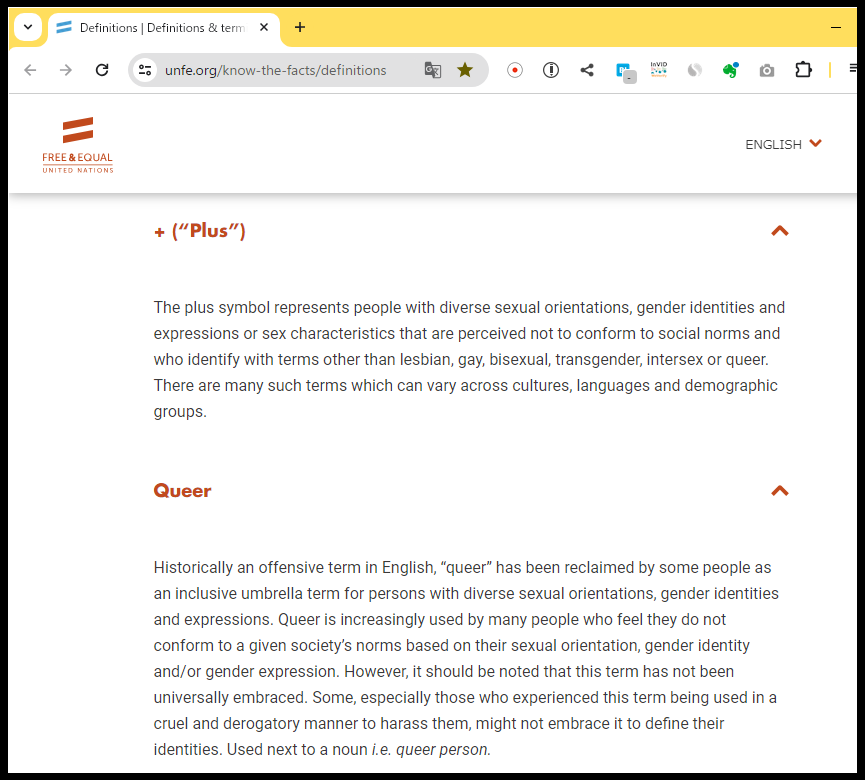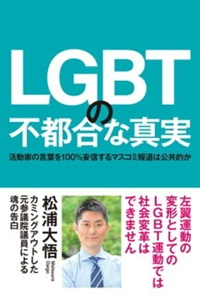
コロコロと話が変わる用語で社会を混乱させられてたまるか。
従来の国連のトランスジェンダーの定義
かつて国連のHPで見られ、各所で参照されていたトランスジェンダーの定義は以下のものでした。*1*2*3
Transgender (sometimes shortened to “trans”) is an umbrella term used to describe a wide range of identities whose appearance and characteristics are perceived as gender atypical —including transsexual people, cross-dressers (sometimes referred to as “transvestites”), and people who identify as third gender.
トランスジェンダー(「トランス」と略されることもある)はアンブラタームであり、性転換者、クロスドレッサー(「トランスヴェスタイト」と呼ばれることもある)、第三の性としてのアイデンティティのある人々など、その外観と特徴が非定型の性別として認識される、広範囲のアイデンティティを表すために使用されます。
この「トランスジェンダーはアンブラタームである」という言及ですが、2024年の2月末頃から、定義から外されました。
変更後の国連トランスジェンダー定義:性別不合・身体違和不要が明確化

変更後の国連のトランスジェンダーの定義は以下の通りになっています。
Transgender/Trans
Describes people with a gender identity that does not align with the sex they were assigned at birth. Trans people may identify with gender identities such as man, woman, trans man, trans woman, transgender person, non-binary person or with a wide range of other terms across different languages and locations. While some transgender people seek to modify their bodies with surgery or hormones and/or take other personal, social or legal steps (the process of transition) to bring their body and gender presentation into alignment with their identity, others do not. A transgender person may have any gender expression, sexual orientation or sex characteristics. Used next to a noun i.e. transgender man, trans person.
出生時に割り当てられた性と一致しない性自認を持つ人々を表す。トランスジェンダーは、男性、女性、トランス男性、トランス女性、トランスジェンダー・パーソン、ノンバイナリー・パーソンなどの性自認を持つ場合もあれば、異なる言語や地域において他の幅広い用語で言い表される認識を持つ場合もある。トランスジェンダーの中には、手術やホルモン剤で身体を修正、乃至はその他の個人的、社会的、法的な措置(移行プロセス)をとって、身体や性別の表現を自分のアイデンティティと一致させようとする人もいるが、そうでない人もいる。トランスジェンダーは、どのような性表現、性的指向、性徴を有していてもよい。名詞に隣接して使用される。例:トランスジェンダー男性、トランスパーソン。
クロスドレッサーが外れているのが分かります。
しかも性別不合・身体違和が無くともトランスジェンダーと呼ぶのだということが明確化されています。心の性と身体の性は一致していないが別に不快感も無い場合。
つまり、「性同一性障害」と呼ばれていた者はトランスジェンダーに含まれるが、それとイコールではなく、そうではない者も含まれるということです。*4
「クロスドレッサー」は「アンブレラタームとしてのクィア」のものとされた

クロスドレッサーはQueer、Plusの方に含まれるようになったと理解できる記述になっています。「LGBTQ+」のような形で記述される際の「Q+」です。
Queer
Historically an offensive term in English, “queer” has been reclaimed by some people as an inclusive umbrella term for persons with diverse sexual orientations, gender identities and expressions. Queer is increasingly used by many people who feel they do not conform to a given society’s norms based on their sexual orientation, gender identity and/or gender expression. However, it should be noted that this term has not been universally embraced. Some, especially those who experienced this term being used in a cruel and derogatory manner to harass them, might not embrace it to define their identities. Used next to a noun i.e. queer person.
どうやら「アンブレラターム」の地位は「トランスジェンダー」から「クィア」に変更されたようです。
Queerの中にGender expressionが含まれるとあり、Gender expressionの中に服装などの外見を通してジェンダーを表現する方法があると説明されているからです。
Gender expression
The way in which people externally portray gender through actions and appearance, including dress, speech and mannerisms. Some terms to describe gender expression include masculine, feminine and androgynous. For a lot of people, their gender expression goes along with the ideas that our societies deem to be appropriate for their gender. For other people it does not. A person’s gender expression may vary, and is distinct from their gender identity, sexual orientation and sex characteristics.

まとめ:コロコロ変わる定義に社会が振り回されてはいけない
活動家らによって性的マイノリティに関する様々な言葉が生み出されてはその用語法を強要する動きがありますが、国連レベルでここまでコロコロと定義が変えられてしまっては、社会が振り回されてしまいます。
言葉の意味の曖昧さを存置しておきながら他者を事実誤認だと痛罵する性的マイノリティなど、不毛な論争を生み出して被害者面する環境を自分らで創出し、その責任を他者に転嫁する動きがそこかしこで見受けられます。
そうした政治運動によって社会が混乱させられないよう、【我々の言葉で】制度を論じていかなければなりません。
編集部より:この記事は、Nathan(ねーさん)氏のブログ「事実を整える」 2024年6月7日の記事を転載させていただきました。オリジナル原稿をお読みになりたい方は「事実を整える」をご覧ください。
















